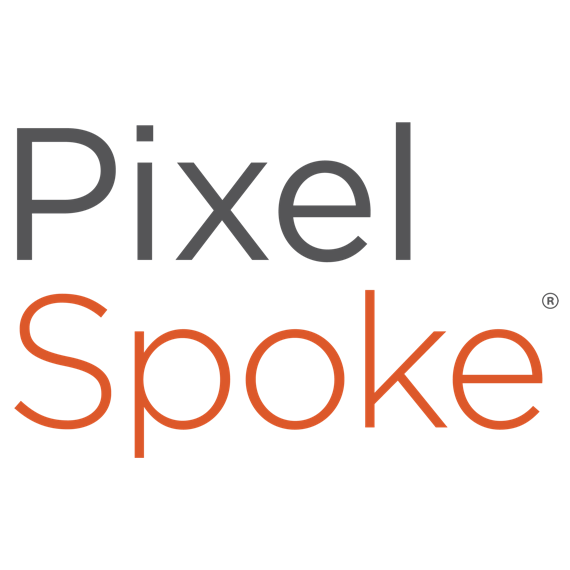What pops into your head when you hear the word “innovation?”
Did your answer include the words “fintech” or “digital?” Hey, no surprise. We’ve seen amazing innovation in these areas, especially over this past year as we learned how to manage a pandemic-driven, socially distanced world.
But let’s not forget that product innovation is not confined to fintech. Though a sleek, user-friendly interface is a plus, it doesn’t guarantee impact. What’s most important is that your product mix addresses the core challenges your community faces, with a focus on your most financially stressed members.
Innovation isn’t simply a “nice to have.” Amber Fielder, VP of marketing at USE Credit Union, says, “The only way we’ll survive is if we innovate. It is as simple as that.”
There can be a tendency to think only certain departments should drive innovation. But Fielder stressed innovation is “everybody’s lane and we should all be driving in it.” Employees should have the freedom to look past their own areas of expertise and not be limited by how things have always been done.
George Hofheimer, former Executive VP of Research and Development at Filene, agrees. “The biggest bang for the buck for credit unions into the future is to create a culture of innovation,” he says, recommending that credit unions “unleash their employees on really intractable problems.”Hofheimer goes on to say, “There’s a lot of opportunity and a lot of talent in the industry to help solve problems in a very, very creative way.”
Here are some examples of credit unions and other financial institutions that have found ways to innovate on loans, deposit products, and employee benefits:
Employee benefits
Trying to decide what products and services your credit union community needs? Here’s a great place to start: the needs of your own employees.
In recent years, credit unions have faced the sobering reality that many of their own employees struggle with financial wellbeing. As credit unions work to align their product and impact strategy, their own employees are a great place to start.
One group that’s doing interesting work in this area is through Red Rocks Credit Union’s Made to Impact program. This organization is built on the concept that we should move past the “typical” employee benefits and provide benefits that actually allow employees to achieve financial freedom. They’ve found there’s often a huge and distressing gap between the benefits credit unions tend to offer and the financial realities their employees face.
As a case in point, I had always assumed every one of my employees would take advantage of our 401(k) match. But then I learned that one of my employees had so many financial commitments that this was absolutely impossible. If someone has negative cash flow every month, they can’t afford to put money into a 401(k)—even if that means giving up “free” money.
Made to Impact’s benefit package is designed to help employees accomplish the things we typically see as being “smart” financial moves and logically build off credit union strengths:
- Stabilize their cash flow—this includes the ability to access emergency funds of up to $2,000 at a reasonable interest rate (making this a built-in alternative to payday lending).
- Save for emergencies.
- Eliminate debt. Made to Impact found many employees were spending upwards of 25% of their after-tax income on debt.
- Financial planning, which includes building long-term savings for major expenses and retirement. Retirement tends to be where most employers focus, but it’s really far down the list for the average employee.
- Make an impact. Employees often want to give back in a way that is more direct than the average “corporate social responsibility” program, and this program includes an account that makes it easy to do just that.
Judah Musick, formerly the Chief Innovation Officer at Red Rocks Credit Union and the mastermind behind the Made to Impact program, says, “And there’s really no better opportunity or alignment than in the credit union space because these products have impact,” said Musick. “And if you align your product strategy with your impact strategy to do good, you can’t help but do well in business because there’s so much need in the marketplace for those products.
Deposit products
We typically hear more about loan product innovation, but we can think differently about deposit products, too. Over the past year, there’s been a huge uptick in savings. As of January 31, the rate was 20.5%; the high point over the last 12 months was at the end of April 2020 when the savings rate hit 33.7%. As a point of comparison, consider that in April 2019, the savings rate was just 7.5%.
For this reason, many credit unions are focused on selling loans at the moment, but what if your credit union serves a predominantly low-income community, where local deposits are too low to support lending needs? Hope Credit Union, which serves Deep South communities like Itta Bena, MS, is one such case in point. The credit union long relied on CD products to import capital from other areas, but the rates needed to attract deposits made this option too costly for the credit union to maintain.
With its Transformational Deposit program, Hope Credit Union seeks those who embrace credit unions’ “people helping people” philosophy and are willing to bring deposits to the credit union and receive lower-than-market interest rates. These members can also opt to forgo interest payments and donate them back to the program. In the spirit of “cooperation among cooperatives,” credit unions who are finding themselves too deposit-heavy could encourage members to move some of their money to the credit unions serving these “opportunity deserts.”
Also in the “people helping people” spirit are Individual Development Accounts, which give at-risk members an incentive for building their savings. The program, which Point West Credit Union conducts in conjunction with the Oregon IDA Initiative, has been in existence since 1999 and is funded by both state and private partners.
The member chooses a savings goal and once they’ve hit their goal, all additional dollars are matched by the program $3 to $1. The member can use the saved funds to buy a house, meet an educational goal, launch a business, restore a home, or purchase equipment to support employment. The individuals and businesses that provide the matching funds receive a tax credit.
Loan products
Loans are a credit union mainstay, but are credit unions offering the right types of loans? Based on the fact that so many credit union members go elsewhere for at least some of their loans, the answer appears to be “no.”
Given the huge influx in deposit dollars many credit unions have seen over the past year, it’s critical to deliver the loan products that members actually need. And despite the fact that stimulus checks have boosted savings for some, for many Americans, a few hundred dollars can still mean the difference between financial stability and distress.
One interesting example of innovation that Citibank recently came up with is a fast and easy way for its customers to get ready access to cash at a fixed rate. Its Citiflex loans are essentially a line of credit that comes directly from the customer’s Citi credit card. This loan doesn’t require an application or credit check—it leverages the one on file for the credit card—locks in at a fixed APR, allows the consumer to choose when they’ll pay, and can deliver funds as quickly as the next day.
As we all know, financial distress is not an isolated problem; rather, it has ripple effects that extend not just to a person’s family, but also his or her employer. Ted and Ned Castle of Rhino Foods understand that financially stable employees are healthier, happier, and more reliable. That’s why they partner with NorthCountry FCU to guarantee their employees same-day access to $1,000 for emergency needs. The advance is repaid through payroll deductions, and when the loan term is complete, that auto-deduction continues to go into a savings account at the credit union (PixelSpoke has implemented a similar program with Portland-based Trailhead Credit Union).
This program is not just about creatively innovating on a loan product, but also, and perhaps most importantly, changing behavior. It’s critical to think about what the default option is, because people usually stick with the default. By making continual saving through paycheck deductions the default option, many Rhino Foods employees were able to build up their first nest egg ever. Shifting this frame of reference can be all it takes to help employees adopt healthier financial behaviors.
Peninsula Credit Union similarly offers a payday loan alternative, allowing members to borrow up to $2000 at a 25% APR — part of its “Second Chance” suite of products for members who, well, need a second chance at attaining financial stability. Also included are L.I.F.T loans, which not only allow members with a low credit score to qualify for a car loan or refinance an existing one but then rewards consistent loan repayment by reducing the loan interest rate by 1% every time the member makes 12 on-time payments in a row.
Getting started
No matter your role at your credit union, you can play a part in establishing a culture of innovation. Here are a few tips:
- Push for little “yeses.” Believe in something? Meet that “no” with a “Well, what if we do it this way?” Be persistent, push for little “yeses” along the way and they might just turn into a big “yes” in the end.
- Keep having the conversation. Innovation isn’t a “one and done,” it’s a constant, ongoing goal. And if an innovation mindset is new at your credit union, recognize it will take that much longer to make change happen.
- Build on the success you saw in 2020. As hard as that year was, it also taught many credit unions an important lesson. “We found that we can shift. We can be nimble,” Fielder stressed. “So where are the other opportunities there? I do think that it’s important that we keep that momentum and learn from the lessons that came with 2020, that showed us what we truly are capable of.”
- Ask members what they need from you—and be innovative about how you reach out to them. We won’t downplay the importance of data and analytics. But here are some other avenues to explore: surveys, social media check-ins, and virtual town halls.
I, for one, am excited to see how credit unions leverage the agility and creativity we saw in 2020 when we finally have space to do more than react to the events unfolding around us. We have an opportunity to do more than return to “business as usual.” Let’s strike while the iron is hot.








